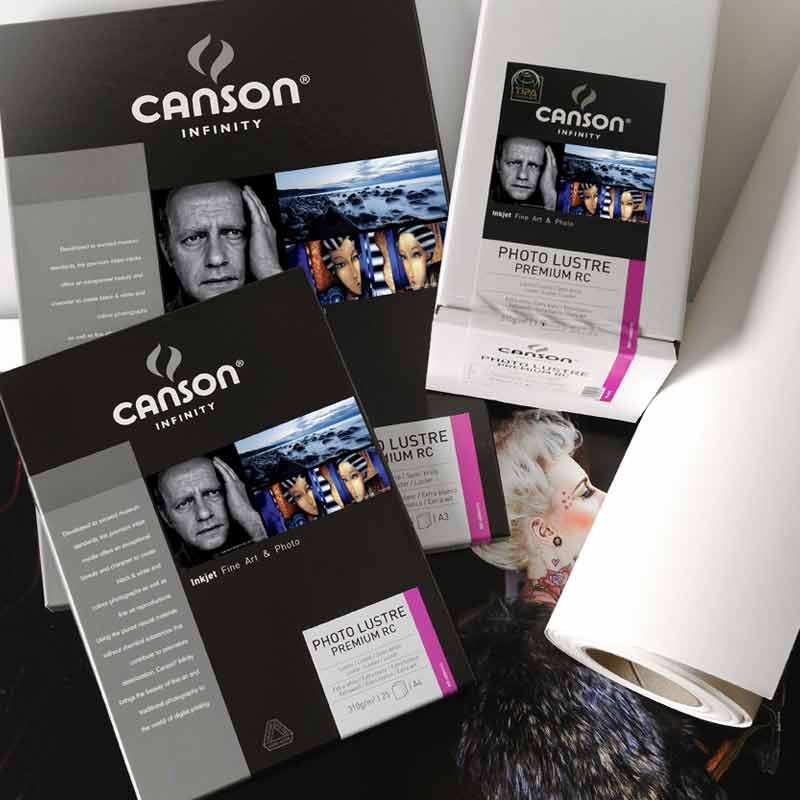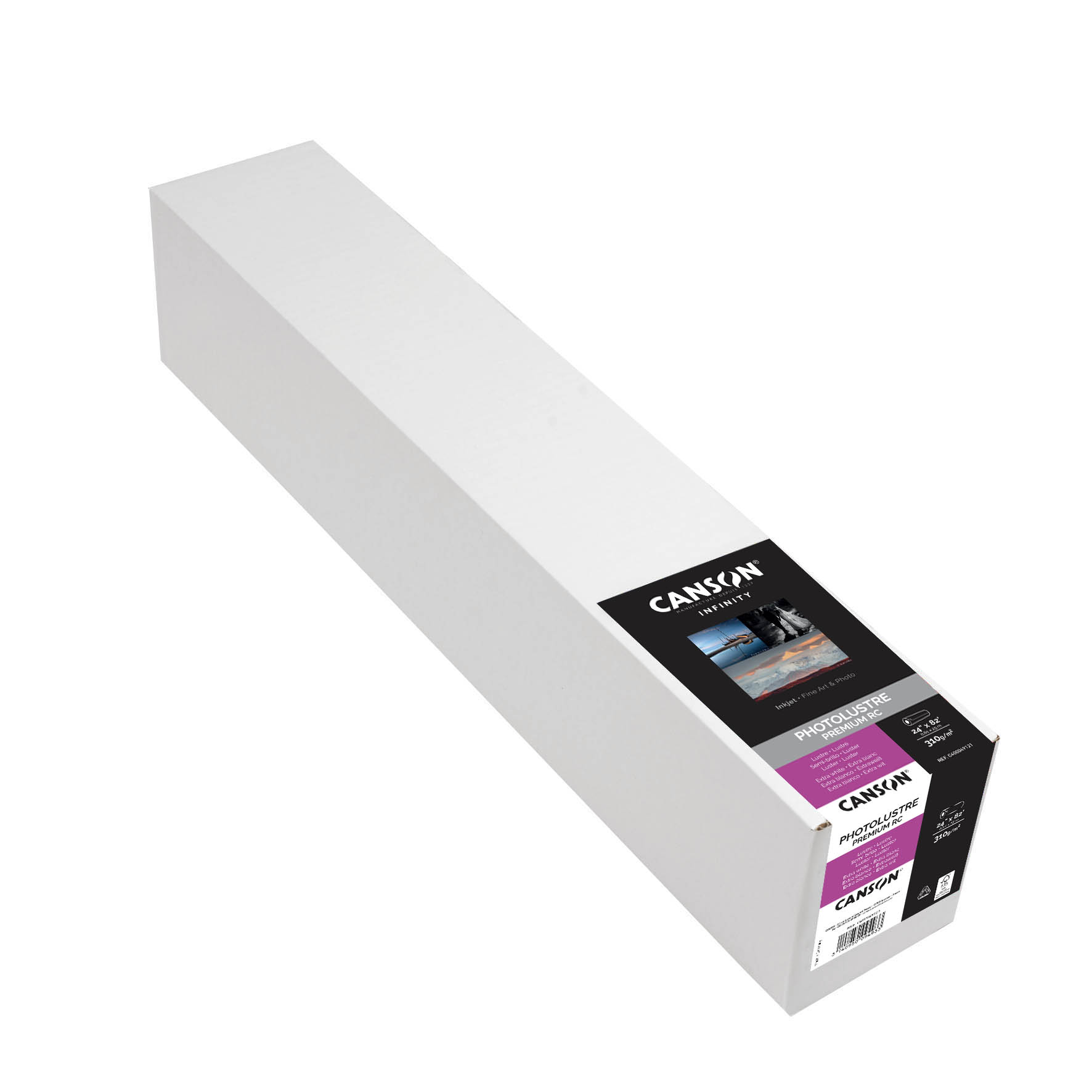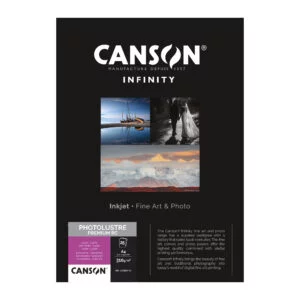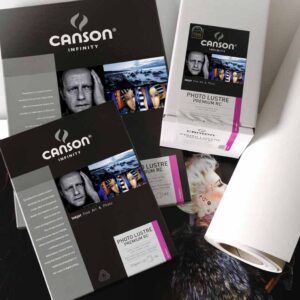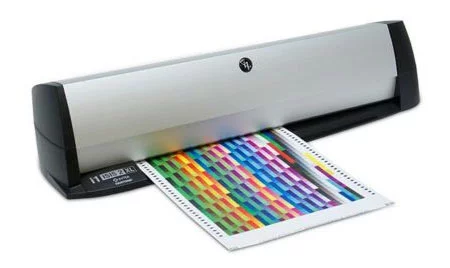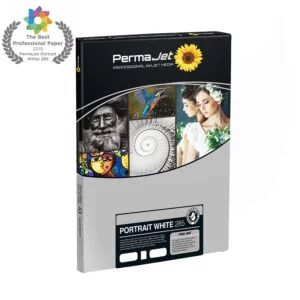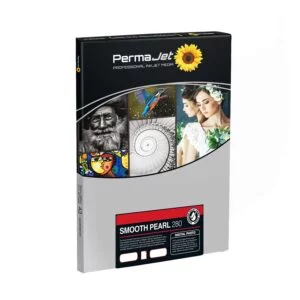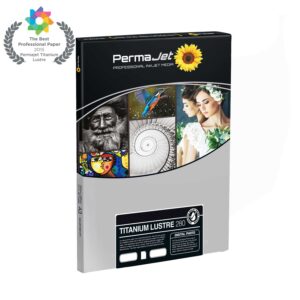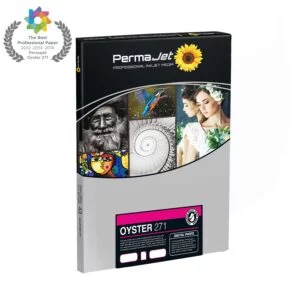The paper surface refers to the overall surface characteristic of the paper, achieved using different types of inkjet receivable coatings. We divide this into 11 categories. Some papers may fall into multiple groups, for example; lustre and pearl could also be considered a semi-gloss paper or a gloss paper may be double sided.
• Gloss - a smooth high gloss surface
• Lustre - a lightly textured, semi-gloss finish
• Matt - a smooth, untextured or textured non-reflective surface
• Metallic - a high gloss, silvery surface with a pearlescent finish
• Pearl - a slightly matt finish with a subtle, pearlescent sheen
• Satin - a soft sheen paper halfway between gloss and matt
• Semi-Gloss - a smooth, semi-gloss flat surface with a slight sheen
• Silk - a unique surface, similar to satin but with a stronger texture embossed into the base before coating
• Velvet - a zero-reflective top layer which creates a soft, deep-matt effect with a very soft, sensual feel and touch
• Washi - manufactured using fine organic Japanese paper-making fibres
• Double Sided - special case papers that are printable to full quality on both sides
• Clear Film - a clear special case papers used for digital transfers or as a contact film
All inkjet papers fall into one of two categories, either textured or smooth. The texture of a paper however can range from very gentle stippling, only apparent upon close inspection, through to heavy indentations visible from a distance.
Relatively smooth papers offer the best finish for most photographic prints. The surfaces have been made to imitate old darkroom papers formerly available for darkroom production e.g. gloss, satin, glossy-unglazed, velvet and matt.
Textured photographic and Fine Art papers feel pleasant when handled. The surface grain becomes an integral part of the photograph or image. The texture of the paper will be visible in the light coloured areas of the image, such as clouds, whereas they will be less obvious in black areas. This is a more nuanced printing, which results in a different feel, with a more "physical" approach to the image.
This is measured in gsm or grams per square metre and is a measure of the weight of the paper, not to be confused with paper thickness.
As a general rule, photo papers tend to be under 300gsm and a paper over 300gsm is usually considered to be a Fine Art paper however heavier weight photographic papers are becoming more commonplace.
Papers with a higher gsm are generally more rigid, have more opacity (let less light through) and can generally be easier to handle, although they do tend to be more expensive. Be careful to check your printer can accept higher weight papers.
Asian/washi papers historically tend to be lighter, 100 to 200gsm.
This indicates what the base of the paper is made from before additional coatings and the ink receiving layer are applied. Possibilities include:
• 100% Cotton - the most common fine art paper fibre
• Alpha Cellulose - the best part of wood pulp. Generally tested to be as archivally permanent as cotton from 285 - 350gsm
• Cotton Blend - a blend of cotton and other materials in varying proportions to give a close match to 100% cotton at a reduced cost
• Bamboo - an ecologically friendly alternative to cotton but needs to be blended with other fibres to give a suitable result – typically mixed with cotton
• Mulberry, Kozo & more - many other plant fibres can be used to make archival paper
• Clear Film - a clear polyester substrate for digital transfer/contact film
• Polycotton - specific to canvas, a polycotton base is made from a mixture of polyester and cotton
• Polyester - specific to canvas, a polyester base is made from 100% polyester for commercial long-run printing
Whiteness is measured in CIE using a scale of 1 to 100, with 100 being the highest possible whiteness. The CIE whiteness index is calculated by measuring the amount of light reflected by the paper across the visible spectrum. A perfect white material will reflect all wavelengths of light equally, and will have a CIE whiteness index of 100. Materials that reflect less light, or that reflect light more unevenly, will have a lower CIE whiteness index.
For a perfect reflecting, non-fluorescent white paper, the CIE whiteness would be 100, however, most ‘white’ paper will have CIE whiteness measures of between 130 and 170 due to the addition of Optical Brightening Agents (OBAs).
Optical brightening agents (OBAs) are fluorescent chemicals that are added to some inkjet papers to make them appear whiter. OBAs absorb ultraviolet (UV) light and re-emit it as visible blue light. They are more common in digital photo papers which tend to have higher white points. This makes the paper appear brighter and whiter, even under low-light conditions.in base and coating
OBAs are not archival, which means Fine Art papers are generally OBA free. Sometimes a small amount is used to even out batches of cotton paper bases. OBA’s can fade over time, which can cause the paper to yellow, which is why it is important to choose inkjet paper that does not contain OBAs if you want your prints to last for many years.
Learn more about OBA in Inkjet Papers.
This describes what white tone the base of the paper has. A warmer white will be creamier whilst a bright white will be closer to pure white. We categorise paper into one of the follow:
1. Bright White - a bright white paper paper with a cool tone
2. Natural White - a natural clean white tone for an art paper and a warmer tone
3. Warm White- a distinctly warmer, creamier paper
4. Metallic - a distinctive cool grey tone with a silvery metallic finish
As a general rule, Digital Photo Papers tend to be much whiter than fine art or fibre base papers, due to the inclusion of optical brightening agents. Fine art papers will more often be more natural or warm white.
We have made every effort to be as accurate as possible when assigning each paper one of the categories above however each manufacturer has a different definition of what might be considered warm white vs. natural white. Please contact us if you'd like discuss a paper in more detail.
Acid in paper can cause it to yellow more quickly and become more brittle over time. For a paper to be archival, or the resulting print to be considered a giclée or fine art print., it must be acid-free.
Papers that are not acid-free are generally best for proofing (test printing) and shorter-term uses. They are not considered fine art materials and are not suitable for print sales in the art or professional photography markets.
This does not mean that these papers will disappear or discolour overnight. They generally have a lifespan that is comparable to that of typical photographic papers. As a result, they are suitable for markets such as signage and décor (for example, print sales for children's bedrooms). However, they should be avoided if you are trying to sell your work as a Fine Art product.
Cotton papers are naturally acid-free, which is one reason why they are often preferred. Other fibres, such as kozo, are also naturally acid-free. High-grade wood pulp papers can also be made acid-free by removing the lignin/acid from the pulp.
Learn more about acid ink inkjet papers.



